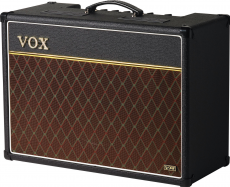
In previous articles, I’ve covered a lot to do with using instruments such as guitar, bass, piano and drums. While these instruments are all great by themselves, it is important to consider how they will be used in a performance setting, and in any performance, at least some of these instruments would need to be amplified. Because of the importance of this in determining how the overall sound of the instruments and the band as a whole comes out, I’ve decided to spend some time looking at the use of sound systems with instruments in a performance setting.
Of course, some of these instruments will need amplification outside of a performance too. For example electric guitars and bass guitars generally require some form of amplification for practicing, even if it’s just a small micro-amp, as the sound of the strings by themselves would be too quiet to really know if you were playing well. Bass guitars generally require a different type of amp to standard electric guitars. This is because playing low notes at a loud volume generally causes a greater vibration than other notes. The speakers in a standard guitar amp may break down under such a large vibration. That being said, normal guitar amps will still work and produce sound using a bass guitar, it just comes with the risk of breaking the speakers.
When working out the sound for your performance, you must get the tone and levels right for each instrument, as well as the overall levels of the band. You can also set specific effects for each instrument which will affect how they sound. This can be done on the guitar or amp directly, or by adding effects pedals to the setup. We’ll begin by looking at how to set up an individual guitar amp. A guitar plugs into an amp with a lead. Once this is set up and the amp has power, you should be able to hear your instrument coming out of the amp already. I usually turn the volume down fully before I plug the guitar in and turn the amp on, since otherwise, the settings could be set up in a way that will cause even a tap of a guitar string to deafen you. Then slowly turn up the volume to see how the guitar sounds. There are various settings on a standard guitar amp. Adjusting each of these settings will change the tone of the guitar. Since a large amount of choosing how you want it to sound is down to personal preference, you may have to just play around with the dials until you have the sound that suits your taste best.
Different genres of music will use different settings when amplifying guitars, which gives each genre its own distinctive sound. Also, not all amplifiers will have the same settings. Generally, cheaper amps will have fewer settings to adjust. However, there are some settings that are quite universal when using amplifiers. In the next article, I’ll go into more specifics about these general settings and how they affect the sound, as well as looking at settings on the guitar itself that will change the sound.
Image from: http://www.altomusic.com/media/catalog/product/1/0/10026540.jpg

0 Comment:
Be the first one to comment on this article.